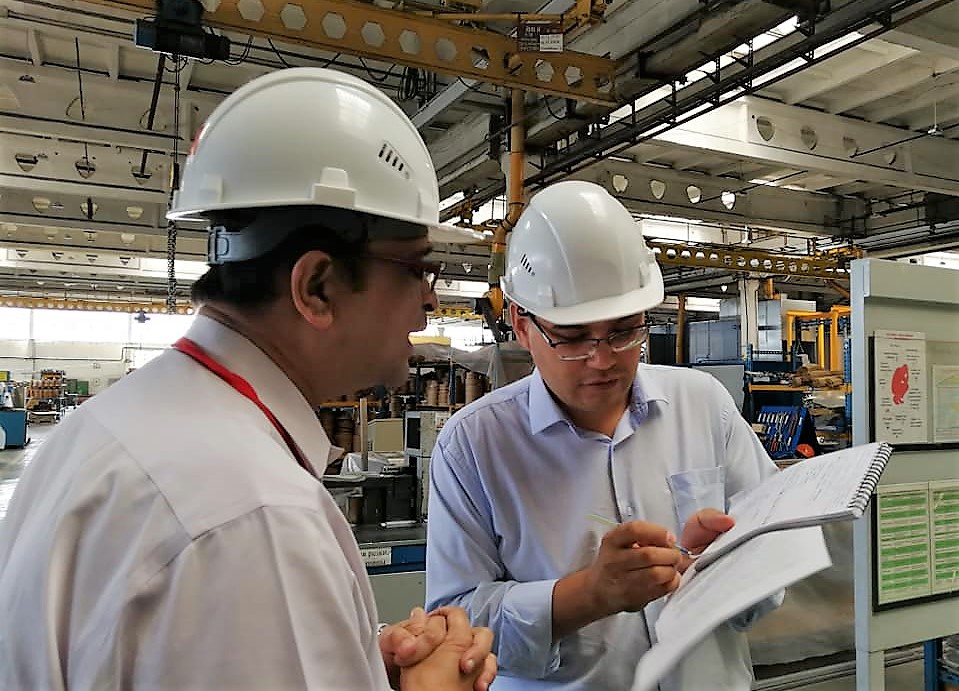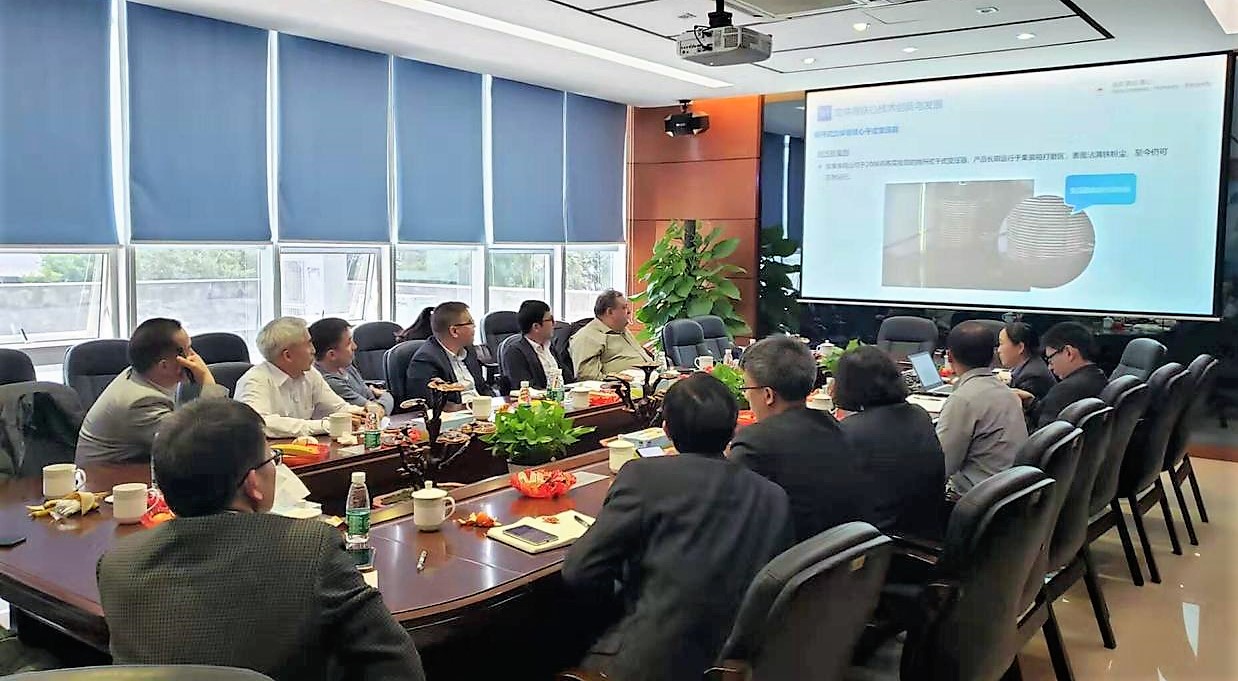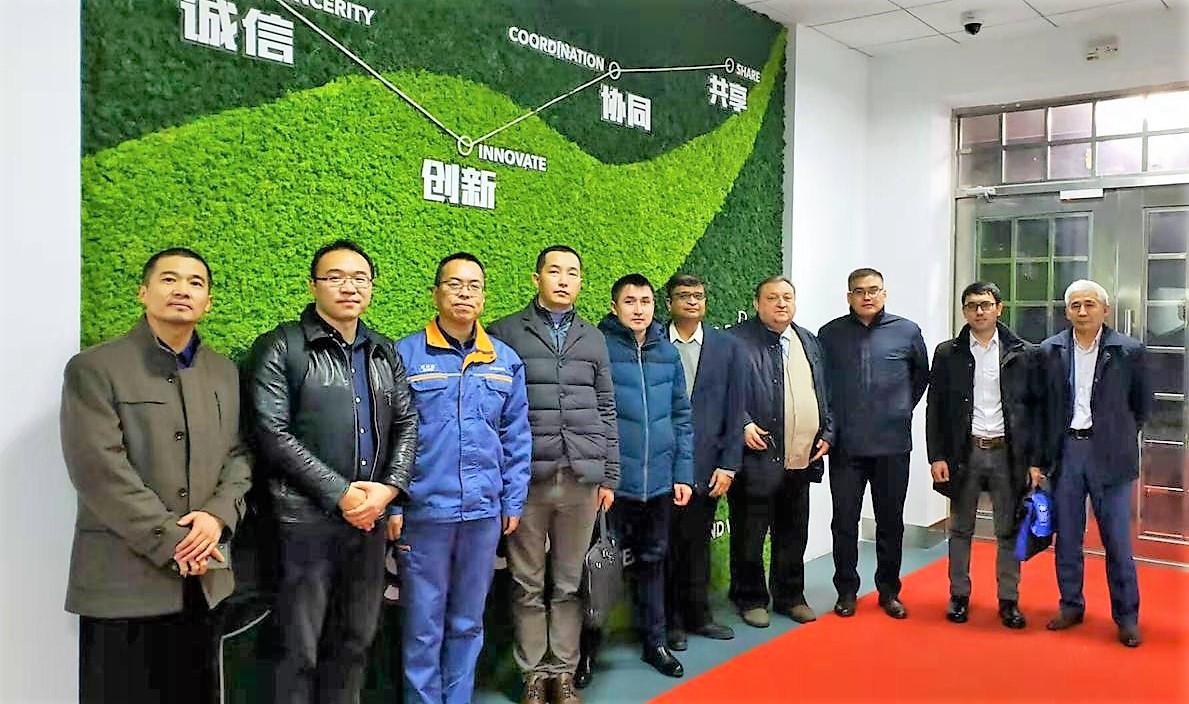December 2019, China – Kazakh engineers visited electrical steel production companies in China to learn the innovative approaches of energy-efficient transformers production.
Kazakhstan is among the top ten countries with the highest greenhouse gas (GHG) emissions per unit of GDP. The heat and electrical power supply sector accounts for 60 percent of CO2 emissions in Kazakhstan’s cities.
Enhancing the efficiency of energy-consuming electrical equipment, namely distribution transformers, can significantly reduce energy losses and lessen GHG emissions. According to the United Nations Environment Program (UNEP), around 5 percent of global electricity is lost annually because of transformers. In Kazakhstan, this figure is a bit higher due to the physical depreciation of equipment. The statistics show that over 75 percent of transformers across the country have been in operation for more than 28 years, and 45 percent of them have functioned for almost 40 years. Upgrading Kazakhstan’s transformer fleet can reduce CO2 emissions by 364.8 thousand tons per year.
In addition, Kazakhstan has not yet adopted energy efficiency standards that would require consumers to get energy-efficient equipment. UNDP is promoting the design of energy efficiency standards for electrical appliances and equipment that would encourage consumers to use more energy-efficient transformers.
Syrym Nurgaliyev, the manager of the UNDP project on energy efficient standards, noted that the minimal energy performance standards (MEPS) had already been designed and adopted for distribution transformers. Thus, for the first time, the Republic of Kazakhstan’s law “On Energy Conservation and Energy Efficiency Improvement” included a section on establishing energy efficiency requirements for equipment, as well as for public procurement.
In addition to the design of standards, UNDP capacitates national transformer manufacturers - Kentau and Ural Transformer Plants – in producing more energy-efficient and high-tech equipment. Thus, UNDP supported partnership building between Kazakh and Chinese transformer manufactures. In December last year, UNDP arranged a visit of Kazakh engineers to the Chinese National Institute of Standardization and a number of plants to learn the best practices of producing high-tech and energy-efficient transformers.
December 2019, China – Kazakh engineers visited electrical steel production companies in China to learn the innovative approaches of energy-efficient transformers production.
Nurbol Tlemissov, the Technical Director of the Kentau Transformer Plant, noted that, currently, Kazakhstan produced class C energy-efficient transformers. However, he added that the more innovative and energy-saving class A and B transformers are to be produced soon. “In China, we met the electrical steel production companies, such as Bao Steel, Naihong Electric and Pearl Electric Equipment Company & Cargill. There, for the first time, we saw the manufacturing process of innovative transformers made of amorphous steel. We built partnerships with those companies, and they have been consulting us on high-tech transformer production since then. By the end of the year, we plan to produce and test our first trial samples. According to preliminary estimates, we expect to decrease energy losses by 30-40 percent once we apply the enhanced electrical steel technology. By using the amorphous steel, we expect to reduce energy losses by another 30 percent,” said Nurbol.
He further noted that between 40 to 90% of transformers produced in Kazakhstan are exported to CIS countries. Energy-efficient transformers from class C are mainly exported to Russia, as the standards of Rosset PJSC have certain requirements for transformers. To stay competitive on the market, Kazakhstan manufactures should start producing more energy-efficient transformers. “Starting from 2021, Russian companies will only be purchasing transformers from class B and higher, and in 2023 they will switch to class A. We must be prepared for this. Besides, with the adoption of energy performance standards and requirements in Kazakhstan, the demand for more energy-efficient transformers will increase on the domestic market as well,” said Nurbol.
In China, Kazakh engineers also learnt the software that enables the production of energy-efficient transformers without purchasing expensive equipment. UNDP will support the Kentau Transformer Plant in designing similar software this year.
The study tour participants also learned the Chinese government’s support measures and subsidies provided to manufacturers to stimulate the development of environmentally friendly equipment. Thus, R&D costs on enhancing the energy efficiency of old equipment are compensated by the state. In Kazakhstan, manufacturers can only rely on research grants aimed at stimulating the development of high-technology products. The Chinese experience in providing incentives to manufacture high-tech equipment could be of interest to Kazakhstan.
The pressing climate change issues require immediate and decisive actions to reduce GHG emissions. Energy-saving transformers are effective in decreasing energy losses and financial costs, and can also contribute to solving environmental problems.
***
A study tour to China for Kazakhstan manufacturers was organized as part of the project “Energy efficient Standards, certification and labelling of electrical household appliances and equipment in Kazakhstan” under the leadership of UNDP Kazakhstan and the Ministry of Industry and Infrastructure Development of Kazakhstan with the support of GEF and UNEP Efficiency Initiative (U4E).
December 2019, China – Kazakh engineers visited electrical steel production companies in China to learn the innovative approaches of energy-efficient transformers production.

 Locations
Locations







